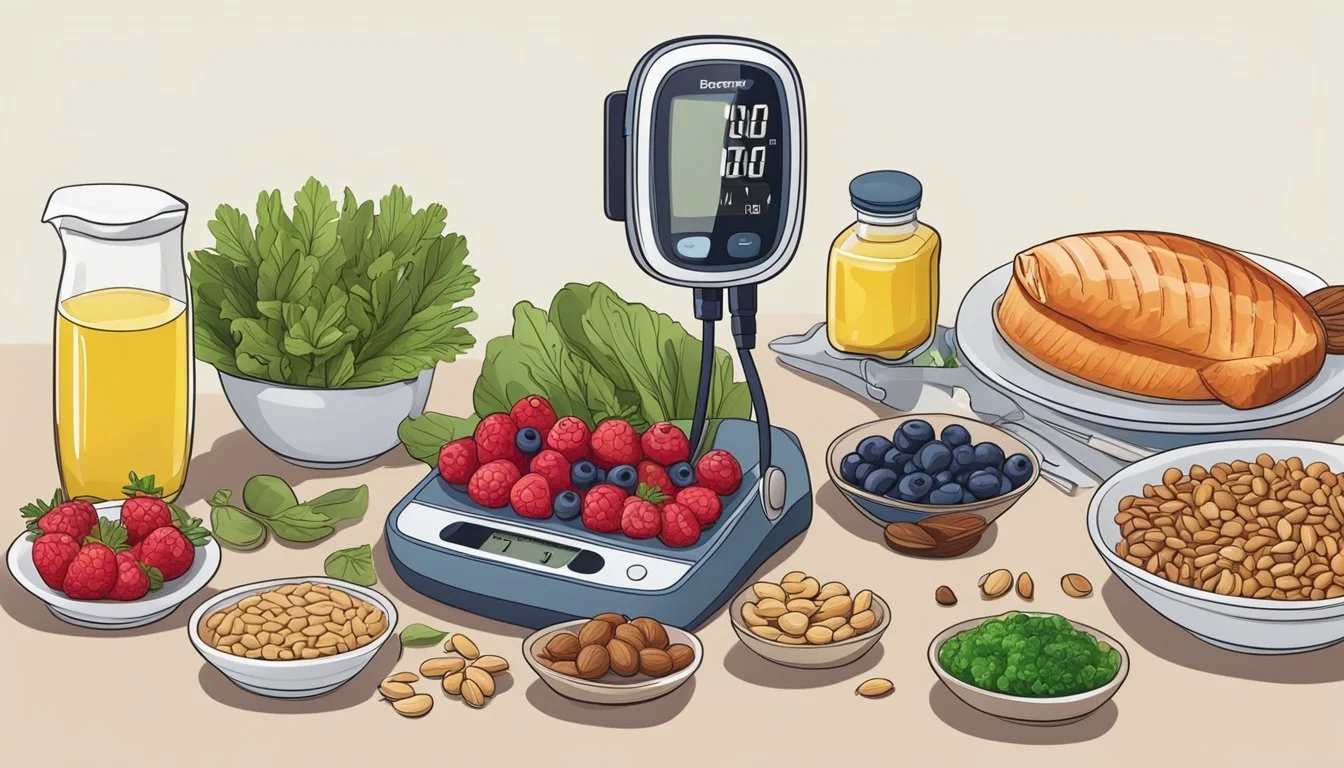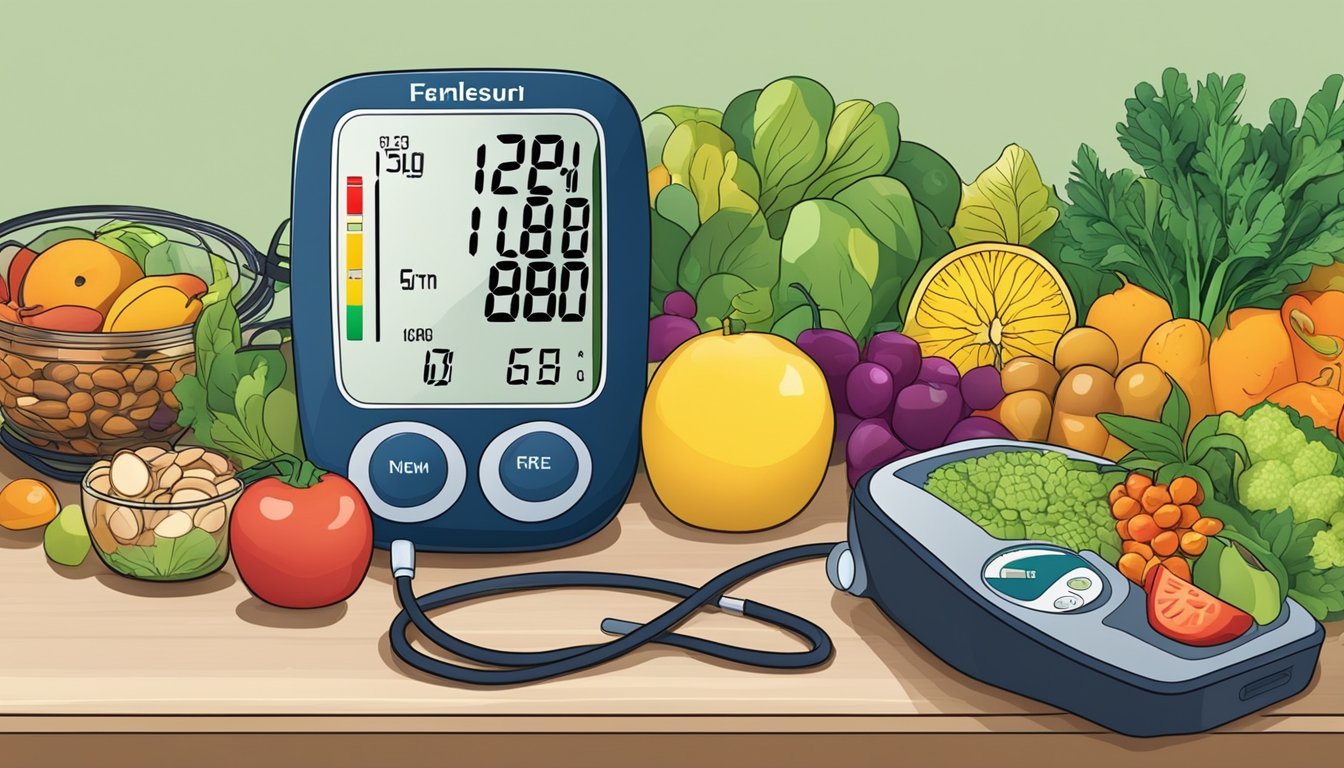How Does the MIND Diet Impact Blood Pressure?
Unveiling the Connection
The MIND diet, short for Mediterranean-DASH Intervention for Neurodegenerative Delay, is a nutritional approach designed to prevent cognitive decline and promote brain health as people age. However, its benefits may extend beyond the brain. High blood pressure, or hypertension, is a leading risk factor for heart disease and stroke, conditions closely linked to both cognitive health deterioration and diet. By focusing on specific food groups that support both cardiovascular and cognitive systems, the MIND diet has the potential to influence blood pressure levels positively.
Key components of the MIND diet include an emphasis on plant-based foods—particularly green leafy vegetables and other vegetables—alongside berries, nuts, whole grains, olive oil, beans, poultry, and fish. These foods are rich in nutrients such as antioxidants, healthy fats, fiber, and vitamins that are essential for both heart and brain health. The diet also recommends limiting intake of red meats (What wine goes well with red meat?), sweets, cheese, butter, and fried or fast food, which can contribute to the risk of chronic conditions such as high blood pressure.
Observations suggest that adherence to the MIND diet correlates with lower incidences of heart diseases and cognitive decline including dementia. Given that hypertension is often associated with these conditions, the MIND diet's heart-healthy eating patterns are thought to help regulate blood pressure. As people are increasingly looking for dietary patterns that can provide comprehensive health benefits, understanding the impact of the MIND diet on blood pressure is crucial to inform dietary recommendations for overall health and longevity.
Understanding Blood Pressure and Hypertension
Blood pressure is the force that circulating blood exerts against the walls of the blood vessels. It is determined by the amount of blood the heart pumps and the resistance to blood flow in the arteries. The measurement of blood pressure involves two numbers: systolic blood pressure, which is the pressure when the heart beats and pushes blood through the arteries, and diastolic blood pressure, representing the pressure when the heart rests between beats.
Normal Ranges for Blood Pressure:
Systolic: Less than 120 millimeters of mercury (mm Hg)
Diastolic: Less than 80 mm Hg
Hypertension, or high blood pressure, is a condition where blood pressure levels are consistently elevated beyond the normal range. It is categorized as:
Elevated Blood Pressure: Systolic between 120-129 and Diastolic less than 80
Hypertension Stage 1: Systolic between 130-139 or Diastolic between 80-89
Hypertension Stage 2: Systolic at least 140 or Diastolic at least 90
Hypertension is a significant risk factor for various health complications, including cardiovascular disease, stroke, and kidney disease. Persistent hypertension puts strain on the heart, leading to heart health deterioration. It can also damage blood vessels, leading to atherosclerosis, which is the buildup of fatty plaques that can restrict or block blood flow, increasing the risk of stroke.
While high blood pressure itself often presents with no symptoms, it requires attention and management to prevent long-term health issues. Monitoring blood pressure and understanding these values allow individuals to take proactive steps in maintaining heart and overall health.
Overview of the MIND Diet
The MIND Diet, a combination of the Mediterranean and DASH diets, focuses on specific dietary choices to support brain health and may potentially delay neurodegenerative disease.
Key Components of the MIND Diet
The MIND Diet (Mediterranean-DASH Intervention for Neurodegenerative Delay) comprises foods believed to be particularly beneficial for brain function. The diet primarily includes:
Vegetables: At least six servings of green leafy vegetables per week, along with other vegetables.
Nuts: Five or more servings per week, as a source of healthy fats and vitamins.
Berries: Two or more servings per week for their antioxidant properties.
Beans: Three or more servings per week,
Whole Grains: Three servings per day for fiber and nutrients.
Fish: Once a week for omega-3 fatty acids.
Poultry: Twice a week as a protein source.
Olive Oil: As the primary cooking oil for its healthy fats.
Wine: One glass per day (optional) for potential cardiovascular benefits.
The diet suggests limiting intake of butter and margarine, cheese, red meat, fried food, and sweets due to their negative impact on heart and brain health.
Comparing MIND With Other Diets
The MIND diet shares characteristics with the Mediterranean diet and the DASH diet but has a stronger emphasis on foods that are associated with neuroprotection. The Mediterranean diet is renowned for promoting heart health through a balanced intake of fruits, vegetables, whole grains, legumes, and olive oil, along with moderate consumption of fish, poultry, and wine. Meanwhile, the DASH diet focuses on reducing sodium to lower blood pressure and incorporates a variety of foods rich in nutrients that help prevent hypertension.
Both diets serve as the basis for the MIND diet's approach to creating a dietary pattern that underlines the importance of nutrition as an intervention for maintaining bodily health and potentially delaying the onset of neurodegenerative diseases. By melding these diets, the MIND diet aims to harness their combined benefits for both cardiovascular and cognitive health.
Nutritional Foundations for Blood Pressure Management
The MIND diet's effectiveness in blood pressure management hinges on its specific nutritional components and their interactions within the body. Each component plays a strategic role in promoting heart health and maintaining optimal blood pressure levels.
Role of Sodium and Potassium
Sodium is a mineral that, in excess, can increase blood pressure levels. The American Heart Association provides guidelines suggesting that individuals limit their salt (sodium chloride) intake to no more than 2,300 milligrams per day, with an ideal limit of no more than 1,500 milligrams for most adults. The MIND diet encourages reducing sodium to help lower hypertension risk.
Potassium, on the other hand, acts as a counterbalance to sodium. It helps relax blood vessel walls, thereby lowering blood pressure. Adults should aim for a potassium intake of about 4,700 milligrams per day according to dietary guidelines. Rich potassium sources include:
Fruits: bananas, oranges, and apricots
Veggies: spinach, sweet potatoes, and avocados
Beans: white beans and kidney beans
Nuts and seeds
Managing Saturated Fat Intake
The MIND diet places emphasis on minimizing intake of saturated fats, which can contribute to high blood pressure by leading to arterial plaque buildup and stiffening. Instead, it promotes consumption of healthy fats found in foods such as:
Fish: especially fatty types like salmon, which provide omega-3 fatty acids
Nuts
Seeds
Olive oil
These sources help maintain elasticity of the blood vessels and support overall cardiovascular health. Poultry should be consumed in moderation due to its saturated fat content, and red meats are to be limited.
Importance of Fiber and Whole Foods
Fiber plays a critical role in blood pressure management by helping lower cholesterol levels and promoting satiety, which can assist in weight management. High fiber content and plant-based components of the MIND diet have been associated with healthier blood pressure levels. Adults should aim for a daily intake of about 25 to 30 grams of fiber.
Key whole foods components in the MIND diet include:
Whole grains: such as oats and barley
Vegetables and fruits: a variety of colored veggies and fruits ensure an adequate intake of essential nutrients
Beans and seeds: for additional protein and nutrients
Incorporating these high-fiber foods contributes to a balanced diet that supports optimal blood pressure.
The MIND Diet's Impact on Heart and Brain Health
The MIND diet, combining elements of the Mediterranean and DASH diets, specifically targets the reduction of heart disease and stroke risks, while also aiming to slow cognitive decline through neuroprotective foods.
Reducing Risk of Heart Disease and Stroke
The MIND diet supports heart health by emphasizing the intake of nutrient-dense foods that are known to promote a healthy cardiovascular system. This dietary approach particularly focuses on:
Vegetables: High in potassium, aiding in blood pressure regulation.
Nuts: Sources of healthy fats and vitamin E, which help maintain healthy cholesterol levels.
Whole grains: Integral for maintaining consistent blood sugar levels, reducing the likelihood of developing hypertension, a risk factor for heart disease and stroke.
Frequent consumption of these foods, as part of the MIND diet, correlates with reduced inflammation and supported arterial health, two critical factors in minimizing the risk of heart disease and stroke.
Protecting Against Cognitive Decline
In terms of brain health, the MIND diet has been linked to a reduced risk of cognitive impairment and neurodegenerative delay. It focuses on:
Green, leafy vegetables: At least six servings per week, providing essential nutrients for brain function.
Berries: Regular consumption tied to slower rates of cognitive decline, due to high levels of antioxidants.
These dietary components help to mitigate psychological stressors and protect the brain against the effects of aging and cognitive decline, by supporting brain structure and function.
Through the integration of foods rich in vitamins, minerals, and antioxidants, the MIND diet creates a multifaceted approach to fostering brain health while also contributing to a robust cardiovascular system.
Evidence-Based Benefits of the MIND Diet
The MIND diet has garnered significant attention due to its potential benefits on cognitive function and overall heart health. Research suggests that it not only targets brain health but also may have a positive impact on blood pressure.
Clinical Trials and Studies
Clinical trials have been at the forefront of investigating the MIND diet's impact on health. For instance, a study by Morris et al., which followed participants for an average of 4.7 years, indicated that adherence to the MIND diet may slow down cognitive decline in aging populations. Key components of the diet, which include leafy greens and nuts, are rich in nutrients vital for brain function.
The diet's similarity to the Mediterranean and DASH diets, both recognized for their cardiovascular benefits, allows it to encompass foods known to support heart health. These aspects suggest that the diet may also be beneficial in managing blood pressure, although direct studies measuring this particular outcome are limited.
Long-Term Health Outcomes
The MIND diet's emphasis on nutrient-rich plant foods and limited intake of animal and high-fat foods supports long-term health outcomes. It is associated with a reduced risk of cardiovascular events, such as stroke, which often correlate with blood pressure management. In addition to potentially lowering the risk of dementia, the diet's focus on dietary patterns that promote a healthy heart could infer secondary benefits for blood pressure control.
Extended adherence to the MIND diet is also posited to correlate with reduced rates of aging-related cognitive decline. Although the connection between the MIND diet specifically and blood pressure requires more targeted research, the broader implications for heart health and stroke prevention contribute to the understanding of the diet's comprehensive benefits.
Practical Guidance for Following the MIND Diet
Embarking on the MIND diet involves a focused approach towards food selection that supports brain health and may contribute to maintaining healthy blood pressure levels. Meticulously designed to incorporate beneficial foods while limiting harmful ones, adherence to the MIND diet could be a stepping stone to a healthier lifestyle.
Starting the MIND Diet as a Beginner
For beginners, a gradual introduction to the MIND diet ensures a more sustainable transition. They should start by incorporating green leafy vegetables and whole grains into daily meals, aiming for at least six servings a week of the former and three servings a day of the latter. Including berries, especially blueberries, at least twice a week can be beneficial due to their high antioxidant content. Nuts should become a staple snack, with a goal of five servings a week.
Designing Daily MIND Diet Meals
A daily MIND diet meal plan strategically combines food groups for optimal benefits. For instance:
Breakfast could comprise a whole grain cereal with a cup of berries and a handful of nuts.
Lunch might include a salad topped with olive oil dressing and portions of fish for omega-3 fatty acids.
Dinner suggestions include a serving of green leafy vegetables, another vegetable of choice, and a whole grain like quinoa or brown rice.
Incorporating olive oil as the main cooking fat and enjoying wine in moderation (one glass per day for women and up to two for men) aligns with MIND diet principles.
Adapting the Diet to Individual Needs
Adherence to the MIND diet doesn't require a one-size-fits-all approach. Portion control and a balanced intake are key aspects. Individuals can tweak the diet to accommodate specific health needs, taste preferences, and lifestyle considerations. For example, if someone is not fond of fish, they can obtain necessary nutrients through supplements or alternative foods rich in omega-3s.
Regularly assessing one's own dietary patterns can help fine-tune the approach, ensuring the diet complements individual health goals effectively, particularly in managing blood pressure and fostering brain health.
Lifestyle Factors and Their Role in Blood Pressure Control
Lifestyle factors significantly influence blood pressure control. Modifying these factors can assist in managing hypertension alongside medication.
Incorporating Exercise and Physical Activity
Exercise is a cornerstone for maintaining healthy blood pressure. Studies consistently show that regular physical activity promotes weight loss and enhances cardiovascular health, which in turn can reduce the strain on the heart and lower blood pressure. The American Heart Association recommends at least 150 minutes per week of moderate-intensity aerobic activity or 75 minutes per week of vigorous aerobic activity, or a combination of both.
Understanding the Impacts of Stress and Psychological Well-Being
Stress and psychological well-being are closely tied to blood pressure levels. Chronic stress may lead to an increase in blood pressure, partly due to the release of stress hormones. Interventions like mindfulness and meditation can help manage stress. Regular practice of these techniques has been associated with better blood pressure control.
The Effects of Alcohol, Caffeine, and Smoking on Blood Pressure
The consumption of substances like alcohol, tea, and caffeine can have immediate and long-term effects on blood pressure. Excessive alcohol intake can lead to sustained high blood pressure, while moderate to high consumption of caffeine could temporarily increase blood pressure. Smoking cessation is critical for reducing blood pressure, as nicotine in cigarettes raises blood pressure and heart rate, and can damage arterial walls.
Monitoring and Measuring Impact
Adhering to the MIND diet can have beneficial effects on blood pressure, but tracking these changes is crucial to evaluate its efficacy. Effective monitoring requires the right tools and regular assessments by healthcare professionals.
Tools for Measuring Blood Pressure at Home
Home blood pressure monitors are essential for individuals following the MIND diet to measure the diet's impact on their blood pressure. These devices should be clinically validated to ensure accuracy. When selecting a monitor, one should consider:
Ease of use: Automatic cuffs with simple interfaces are preferred.
Cuff size: Proper fit is crucial for accurate readings.
Features: Some devices offer digital logs and connectivity to smartphone apps for tracking.
A typical routine might involve:
Daily measurements at the same time each day, ideally in the morning before eating or taking medication, and in the evening.
Consistency: Taking readings in the same seated position, following a rest period.
Logging readings: Keeping a record to identify trends or changes over time.
Regular Health Check-Ups and Measurements
Beyond self-monitoring, regular visits to a doctor are vital to evaluate the comprehensive impact of the MIND diet on one's blood pressure. These check-ups may include:
Blood pressure assessment: Comparing home readings with clinical measurements for consistency.
Cholesterol levels: High cholesterol can affect blood pressure, and dietary changes may influence these levels.
Body weight tracking: Since body weight can impact blood pressure, tracking changes can be informative.
Health monitoring: Discussion of diet adherence and lifestyle factors affecting blood pressure.
These measurements, both at home and during doctor visits, serve as a feedback loop, guiding patients on how to adjust the MIND diet and other lifestyle choices for optimal blood pressure control.
Addressing Challenges and Common Misconceptions
Adhering to the MIND diet can contribute to better health outcomes, but misinformation and practical challenges often impede commitment. Understanding these elements is essential for effective blood pressure management through diet.
Debunking Myths About the MIND Diet
Myths about the MIND diet can deter individuals from following this eating pattern that has been associated with numerous health benefits, including blood pressure regulation.
Myth: The MIND diet immediately lowers blood pressure.
Fact: While the MIND diet is rich in fruits, vegetables, whole grains, and other heart-healthy foods known to support healthy blood pressure levels, significant changes typically require consistent adherence over time.
Myth: The MIND diet requires drastic dietary overhauls.
Fact: The MIND diet promotes gradual changes, encouraging the inclusion of brain-healthy foods and reducing the intake of those detrimental to cognitive health.
Tips for Overcoming Obstacles to Adherence
Sticking to the MIND diet can be challenging, but the right strategies can make it more manageable, enhancing its potential to impact blood pressure positively.
Consistency Over Perfection:
Patients should focus on consistent adherence rather than perfect compliance, gradually adopting MIND diet principles.
Simple Substitutions:
Replacing certain ingredients in favorite recipes with MIND diet-friendly alternatives can make the diet more approachable and sustainable.
Meal Plans and Preparation:
Developing weekly meal plans and preparing dishes in advance can reduce the effort required on a daily basis, making it easier to stick to the MIND diet.
Incorporating these approaches can support the effectiveness of the MIND diet in managing blood pressure and contributing to an overall healthier lifestyle.







